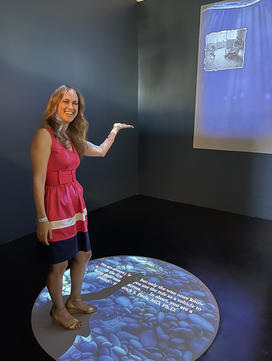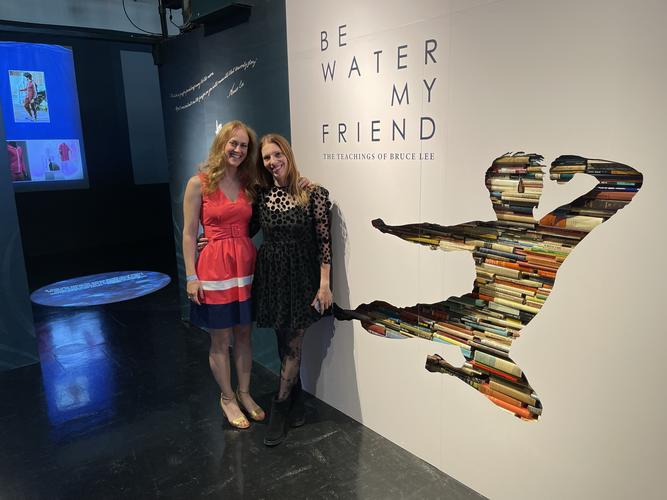With Virtual Reality, Eve Weston ’01 Creates Interactive Art
Weston worked on an exhibit of Bruce Lee’s book collection that opened this summer
Imagine a museum filled exclusively with books. Books on philosophy, on business, on boxing and stretching. It’d be a lot to look at. Last year, Eve Weston ’01 was considering this challenge: how to display some 2,800 books that belonged to martial artist and actor Bruce Lee for a new exhibit at Seattle’s Wing Luke Museum.
“You don’t really want to go to a museum and look at pages in glass cases,” said Weston, who studied classics and linguistics at Princeton. “How can we invite the museum goers into his library, but also his mind?”
Her show, “Be Water, My Friend: The Teachings of Bruce Lee,” a collaboration with the Bruce Lee Foundation, opened July 9. Inside the museum, visitors are asked to step onto one of three circular platforms, which Weston called “launchpads.” Each looks like water, and stepping on one prompts the water to look like it’s rising, and a quote to appear. Then after a moment, another projection appears on a nearby screen showing Lee’s handwritten margin notes and/or artifacts from his life.“He was a very active reader,” Weston said, “both active in the sense that he would underline things and write notes in the margins, but also that he would often be doing things like stretching or cooking while reading.” When the visitor moves or shifts again, a new projection appears: Lee’s handwritten notes, along with photos and videos from his films. You can step on and off the circle, each time triggering a new image. The goal, Weston said, is for visitors to set the pace for how they absorb Lee’s collection.
The project has been years in the making. Before the pandemic, Lee’s daughter approached Weston’s co-creative director, Jessica Kantor, to help create a new exhibit about her father. His books hadn’t been shared with the public before. Weston and Kantor scrolled through hundreds of scanned pages to decipher Lee’s handwriting and categorize each quote and margin note into three categories — mind, body, and spirit — which became the three launchpads.
Curating a museum exhibit was new for Weston, but interactive art wasn’t. Ever since she learned about virtual reality from a classmate at her 15th Princeton reunion, she’s been thinking about storytelling that lives off the page. In 2018, she filmed a virtual reality sitcom called The BizNest.

Today, she’s directing, writing, and consulting on immersive and experiential stories for virtual reality at museums, theme parks, and stores. Weston has taught virtual-reality filmmaking and TV writing at Emerson College Los Angeles, Los Angeles Film School, and Chapman University. And last fall, she wrote a book, 10 Kick-Ass Careers for Storytellers, about people working creative jobs in fields including podcasting, video games, virtual reality, and artificial intelligence.
“It’s important for artists to feel like this space is accessible,” Weston said. “That it’s not just for tech people who understand the jargon. It’s the artists that are going to make it a world in which we want to live.”













No responses yet